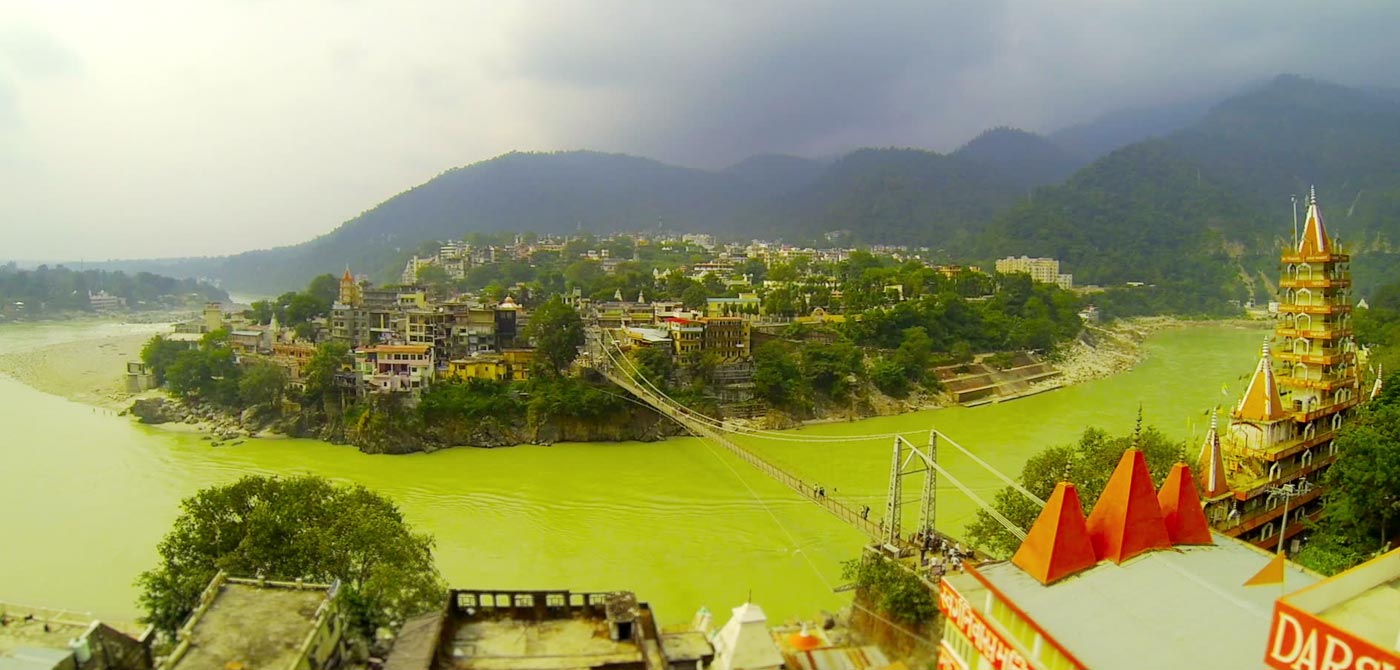History of Rishikesh
History of Rishikesh is town in the Dehradun District of Uttarakhand state in India. Total population of Rishikesh is 75,020 (53% male and 47 % female) as of 2001. Rishikesh is situated at 409 meters above sea level in the foothills of Garhwal Himalayan Range and surrounded by the Shivalik range. Rishikesh is 35 kms far from Haridwar, 90 Kms from Mussoorie, 25 Kms far from Jollygrant airport Dehradun, and 240 kms far from New Delhi.
Rishikesh has spectacular view of jungle-clad hills. Rishikesh has also confluence of River Ganges and Chandrabhaga. The glorious attraction of Rishikesh is none other than the great river Ganges herself, running rapidly throughout the city. In the ancient time and still so many yogis, rishis, sages and sannyasis attracted to Rishikesh to practice yoga in this peaceful location. Since then, Rishikesh has known as an abode of sages. Rishikesh is a holy town with so many Ashrams and it is famous for the yoga world wide. Rishikesh is now world famous as a Yoga Capital of the world. Every year during the March month one week long International yoga festival is hosted by Rishikesh.
Rishikesh is also known as gateway to the Char Dham. Char Dham is four popular holy temples on the hills (Kedarnath, Badrinath, Gangotri, and Yamunotri) Thousands of people attracted every year to Rishikesh for spiritual relief, peace, learn yoga, adventure and to take a dip for salvation. The famous among them were Beatles, Kate Winslet and many more others celebrities. It is believed that by meditation in Rishikesh one can get "Moksha" (liberation from the cycle of death and rebirth) as well as holy dip in the river Ganges.
Apart from spirituality now Rishikesh Tourism is also hub for the adventure activities such as rafting, camping, trekking and bungee jumping. Rishikesh is full of tourist every time. There are also big ashrams, centers for Yoga, Meditation, Ayurvedic Massage and astrology are here. Rishikesh is also known as the white water rafting capital of India.
Two big suspension bridges play a major role (such as nerve system in body) in day- to- day life of Rishikesh. These two bridges (jhulas) are know as Ram Jhula and Lakshman Jhula(Named after lord Ram and his brother Lakshman, the heroes of the Ramayana, who supposedly crossed the river Ganges at Rishikesh on their way up to the hills.). Rishikesh is divided loosely in many parts such as Rishikesh, Ram Jhula (Shivanand Nagar), Muni Ki Reti, Lakshman Jhula or Tapovan and Swarg Ashram, Pashulok Barrage, Dhalwala, 14 Bigha and Shisham Jhari.
From Ram Jhula one can take a boat on sharing basis or walk on the bridge to cross the river. Both sides of the bridge is always crowded with shops of cloths, holy beads, shawls, precious and semi precious stones, replicas of deities, astrological gems, Ayurvedic medicines and Vedic treatises as well as signs of marketing yoga, meditation classes and Ayurvedic massage. Other side of the bridge is known as Swarg Ashram area. So many big ashrams are here such as Swarg Ashram, Gita bhawan and Parmarth Niketan. When you cross the river temples welcomes you with their engraved deities and music shops greets you divine sacred ragas.
In evening beautiful Ganges Ceremony(Ganga Aarti) is organized at Parmarth Niketan and Triveni Ghat. The Brahmin Pundits (priests) performs Ganges Puja (ritual worship) with Vedic hymns, sound of hands clapping and the drums (tabla). Hundreds of people come to witness this Pooja and offer leaf bowls which are filled with flowers and small oil lamps to the goddess. The small sparkling lights floating lamps, river Ganges and auspicious atmosphere creates such a magnificent view and feeling that can attract anyone to join the prayer even the visitors from outside India who can't understand the vedic songs.
History of Rishikesh
Rishikesh’s roots trace back to the legendary Kedarkhand (Garhwal region). Legend has it that Rama performed a penance here for killing Ravana. Impressed by Ram, Lord Vishnu appeared to him here in his avatar of “Hrishikesh”. This is where Rishikesh derives its name from. The Skanda Purana’s Kedar Khand also speaks of Indrakund, which existed in Rishikesh.
The place where Lakshman Jhula is located is believed to be the place where Lakshman crossed the Ganges River using a jute rope. The jute bridge was replaced by an iron one in 1889 and followed by the floods of 1924 when the bridge was washed away, it was replaced by the present-day bridge, which is much stronger.
It is the cultural, mythical and religious heritage like this that draws thousands of tourists to Rishikesh every year. Home to hundreds of prominent and smaller temples, this town on the banks of the holy River Ganges has a sacred resting place for many saints and sages since time immemorial.
 +91 9799050299
+91 9799050299 
